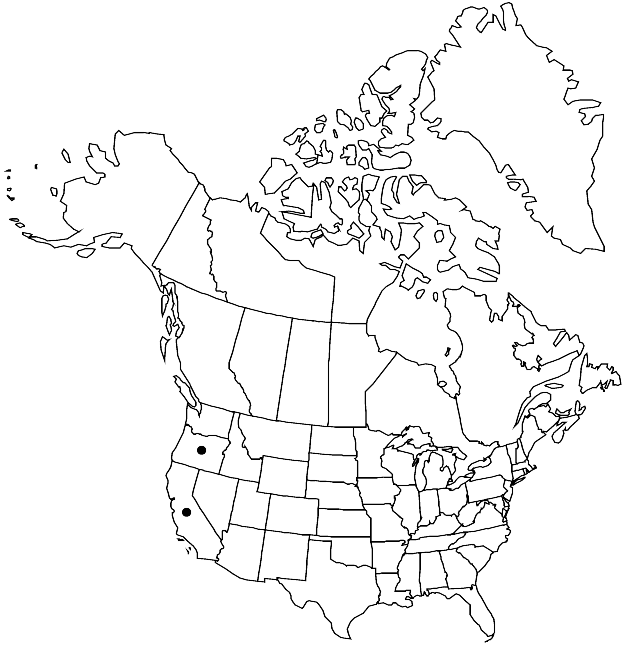Streptanthus howellii
Proc. Amer. Acad. Arts 20: 353. 1885.
Perennials; (caudex simple or branched); (glaucous), glabrous. Stems usually unbranched, rarely branched distally, 3–8 dm. Basal leaves (soon withered); not rosulate; petiolate; blade (somewhat fleshy), similar to cauline. Cauline leaves (petiolate); blade broadly spatulate-obovate to suborbicular, or (distally) narrowly oblong-oblanceolate to linear, 1.5–10 cm × 5–45 mm, base (distally) cuneate to attenuate, not auriculate, margins entire, repand, or obtusely dentate, (entire distally). Racemes ebracteate, (lax). Fruiting pedicels divaricate to ascending, (straight), 7–17 mm. Flowers: calyx subcampanulate; sepals purplish, oblong, 5–8 mm, not keeled; petals maroon to purple, 8–12 mm, blade 3–5 × 0.5–1 mm, margins not crisped, claw 5–7 mm, wider than blade; stamens in 3 unequal pairs; filaments (distinct): abaxial pair 5–6 mm, lateral pair 4–5 mm, adaxial pair 6–7 mm; anthers (all) fertile, 3–3.5 mm; gynophore 0.5–5 mm. Fruits divaricate-ascending, smooth, straight to slightly curved inwards, flattened, 5.5–12 cm × 2.5–3.2(–3.5) mm; valves each with prominent midvein; replum straight; ovules 24–44 per ovary; style 0.3–3 mm; stigma subentire. Seeds broadly oblong to suborbicular, 3–4 × 2–3 mm; wing 0.5–1.1 mm wide, continuous. 2n = 28.
Phenology: Flowering Jun–Jul.
Habitat: Dry serpentine slopes and ridges in open conifer-hardwood forests
Elevation: 600-800 m
Discussion
Of conservation concern.
Streptanthus howellii is known from the Klamath Mountains in California (Del Norte and Siskiyou counties) and Oregon (Curry and Josephine counties).
Selected References
None.
